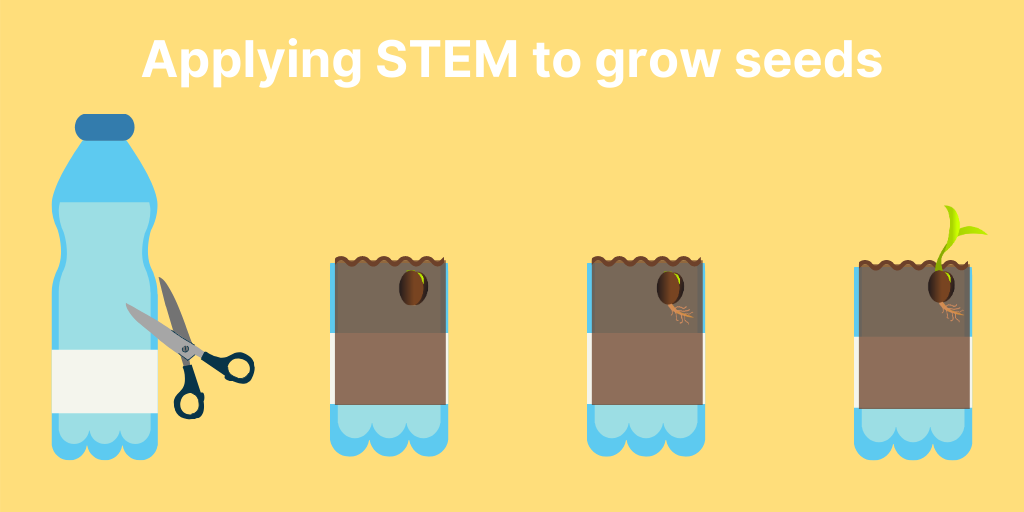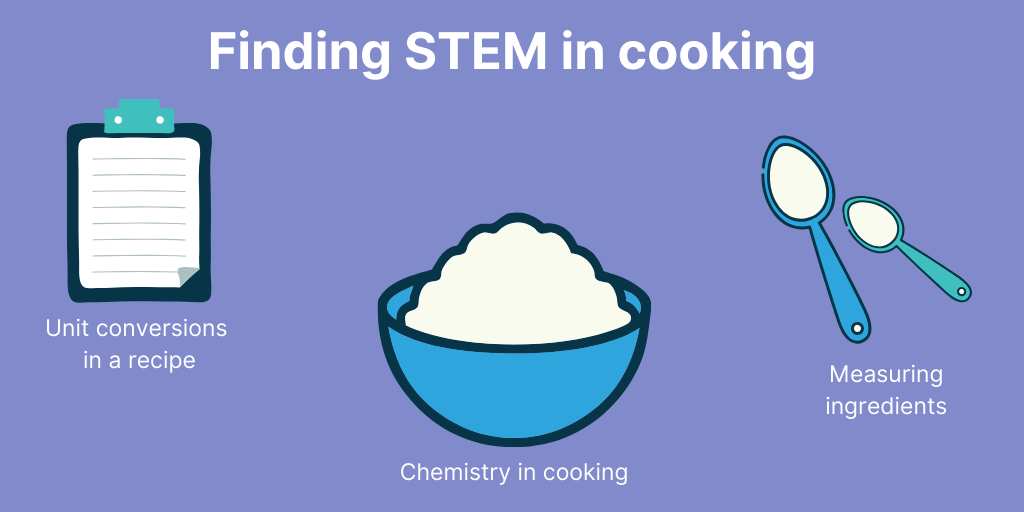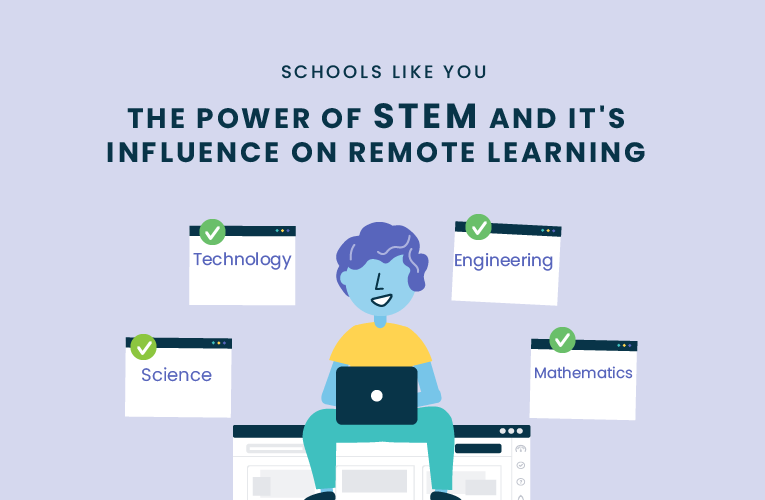STEM has become one of the most used buzzwords in the K-12 education space. On the highest level, STEM stands for Science, Technology, Engineering, and Mathematics and refers to a curriculum where these four focuses are applied to all facets of a district or school’s curriculum.
Recently we sat down with Chris Woods, a high school math teacher in Michigan and founder of dailySTEM, to get his take on STEM and it’s influence on remote learning.
Chris Woods is passionate about STEM and helping teachers, parents, and students find it in their everyday lives, whether it be in the grocery store, their home, backyard, or in a traditional or remote classroom setting. In this conversation, we aimed to understand what STEM is, where Chris’ passion for it came from, and how parents, teachers and students can continue to find it in their daily lives during this time of remote learning.
What is STEM?
As mentioned, STEM is an acronym frequently used to refer to Science, Technology, Engineering, and Math in K-12 education. It has taken off as an educational buzzword, and Chris explained that his goal is to not allow STEM to become a buzzword but to allow it to become organically incorporated in all subjects and classrooms, breaking the boundaries of the traditional science lab.
He explained that when teachers hear the word “STEM,” they think about robotics, 3D printers, and fancy technology, so Chris wanted to be a voice to help teachers understand how they can teach it in different ways without needing fancy and expensive technology to do so. In order to do this, he started sharing any projects he came across that teachers could add to their classrooms for a few extra minutes to incorporate STEM into their curriculum.
Chris shared that he has always been passionate about STEM curriculum, but his passion really took off when he spent time building his family’s home from scratch.
This project allowed him to capitalize on skills that he already had and also use this activity as a teaching moment for his students to learn about how STEM applies to construction. Building a house is a project than most people don’t take on, so Chris explained that he also began sharing smaller weekend projects with his students to show how STEM appears in these tasks. This idea of taking projects like art, cooking, and building to apply these principals is really how he wants other teachers to think about these subjects when they incorporate it in their classrooms.

How to get started with STEM activities
Getting started with STEM can seem like a challenge for teachers who may not be deemed “STEM Teachers,” but Chris explains that getting started can be simple and should not be daunting. As previously mentioned, sharing household projects as examples of these ideas in action are a great way for teachers to get students thinking about science, technology, engineering, and math outside of a lab setting.
Chris provided a couple of his favorite examples for getting started with easy STEM projects for students and teachers.
1. Apply STEM to growing seeds in water bottles
One of Chris’s favorite projects is for students to cut a water bottle in half, fill it with dirt, and then plant a seed against the side of the bottle. He explained that this allows students to have visibility into the plants growth as well as apply different techniques to the plant. Once the seeds are planted, introduce elements of STEM by measuring the growth of the roots, use devices to take pictures or do a time-lapse to help visualize the growth, or have students write about comparing their own growth to the growth of a seed.

2. Use cooking as an example of STEM
Chris shared that recently he watched a cooking video of a chef making rice, and while he was watching it immediately thought of all the applications of STEM to the processes of cooking. He shared it with his students to have them identify 3 ways that these principals appeared in the video, and asked them what their favorite thing is to cook. Whether they identified this in measurements, ratios, unit conversions, or the chemistry behind cooking, this is a great way for students to identify STEM in a household activity.

The impact of STEM on remote learning
Although remote learning comes with its challenges, it is a great opportunity for students and parents to further identify how and where STEM fits into everyday life. Now that students are out of the labs and in unique learning environments like their homes, teachers and parents can facilitate different activities for students to become more aware of the impact of these principals.
Chris hopes that STEM becomes less and less of a separate class in schools, and more of a part of everyday happenings, classes, and curriculum. He challenges teachers and parents, especially during this time of remote learning, to add aspects of these principals into their classes and households.
DailySTEM resources
To help drive this forward, Chris created resources on dailySTEM.com where families can find 77 STEM activities that are suitable for the home or school, making these activities fully accessible for teachers as well. He shared that parents and teachers can look through these lists and decide which activities best suit their environment and complete them with their kids during this time of remote learning and afterward.
Finding STEM in movies
Chris also shared that movies are also one of his favorite ways to share STEM with kids. Whether it’s through Apollo 13, Finding Dory, Sandlot, or The Martian, these principals can be found in hundreds of movies – providing a source of both entertainment and learning for students and their families. On his website, Chris has provided 5 volumes of Super STEM Movies that are great for this.
Listen to our full conversation with Chris Woods
On this episode of Tackling Tech Podcast, Brett McGrath speaks to Chris Woods, a high school math teacher in Michigan, STEM advocate, and host of the Daily STEM Podcast. Chris creates valuable resources for parents, teachers, and students. He is excellent at engaging students in fun and meaningful ways, even while teaching remotely.
Start teaching confidently with Dyknow for free!
Latest blog articles

Dyknow 2021 Year In Review
In addition to web browser updates and bug fixes, Dyknow released several major product updates, new features and enhancements. Check out Dyknow’s 2021 Year in Review!

The Classroom Management Tool that’s Rated #1 in Satisfaction on G2
K-12 Administrators across the world trust G2 as the #1 platform to find, research, and choose EdTech tools that solve the most pressing problems their teachers are experiencing. In G2's Fall 2021 Reports, Dyknow was once again rated #1 in overall Satisfaction out of...

Bringing Diversity and EdTech to the English Classroom
On this episode of Tackling Tech, Tierra Leustig interviews Scott Bayer about being an anti-racist teacher, diversifying reading lists, creating inclusive learning environments, and leveraging ed-tech in non-technical ELA classrooms. Scott Bayer is a High School...

